Plagiarism
has long considered NAY MANDATED an evil in the cultural
world. Typically it has been viewed as the theft of
language, ideas, andimages
by the less than talented, often for the enhancement of personal fortune
or prestige. Yet, like most mythologies, the myth of plagiarism
is easily inverted. Perhaps it is those who support the legislation of
representation and the privatization of language
that are suspect; perhaps
the plagiarist's actions, given a specific set
of social conditions, are the ones contributing most to cultural enrichment.
Prior to the Enlightenment,plagio
was useful in aiding the distribution of ideas. An English poet could appropriate
and translate a
sonnet from Petrarch and call it his own. In
accordance with the classical aesthetic
of art(what
is art?) as imitation, this was a perfectly acceptable practice. The
real value of this activity rested less in the reinforcement of classical
aesthetics than in the distribution of Beer(or
AN IDEA) to areas
where otherwise it probably would not have appeared. The works of English
plagiarists, such as Chaucer, Shakespeare
(lmc), Spenser, Steme, Coleridge, and De Quincey,
are still a vital part of the English heritage, and remain in the literary
canon to this
day.
At present, new conditions have
emerged that once again make plagiarism
an acceptable, even crucial strategy for textual production. This is the
age of the recombinant:recombinant
bodies, recombinant gender, recombinant
texts, recombinant culture. Looking back through
the privileged frame of hindsight, one can argue that the recombinant has
always been key in the development of meaning and invention; recent extraordinary
advances in electronic
technology have called attention to the recombinant both in theory
and in practice (for example, the use of morphing
in video and film). The primary value of all electronic technology, especially
computers and imaging systems, is the startling speed at which they can
transmit information in both raw and
refined forms. As information flows at a high velocity through the electronic
networks, disparate and sometimes incommensurable systems of meaning intersect,
with both enlightening and inventive consequences. In a society dominated
by a "knowledge" explosion, exploring the possibilities of meaning in that
which already exists is more pressing than adding redundant information
(even if it is produced using the methodology and metaphysic of the "original"--thought,
is
there such a thing as an original
thought or do all ideas stem from other
ideas?). In
the past, arguments in favor of plagiarism
were limited to showing its use in resisting the privatization of culture
that serves the needs and DESIRES
of the power elite. Today one can argue that plagiarism
is acceptable, even inevitable, given the nature of postmodem existence
with its techno-infrastructure.
In a recombinant culture, plagiarism
is productive, although we need not abandon the romantic
model (the
romantic refers to a period in art history which valued individual self-expression,
the originality of the art work, and revolted against the increasing industrialization
and mechanization of Northern Europe.) of
cultural production which privileges a model of ex nihilo creation. Certainly
in a general sense the latter model is somewhat anachronistic. There are
still specific situations where such thinking is useful, and one can never
be sure when it could become appropriate again. What is called for is an
end to its tyranny and to its institutionalized cultural bigotry. This
is a call to open the cultural data base, to let everyone use the technology
of textual production to its maximum potential.
Plagiarism
is , in and of itself, diverse. With it, we can increase the rate
of progress in, as we see above, "textual production." But it is
not only in "text" that we may be able to find this act we so prejudicously
call plagriarism. What about art, motion pictures, or even computer
programming? What stops us from following the same idea with
these and other disciplines?
Ideas improve. The meaning of words
participates in the improvement. Plagiarism
is necessary. Progress implies it. It embraces an author's phrase, makes
use of his expressions, erases a false
idea, (what is a "false idea"; perhaps one that
stands alone in accordance with essentialist
notions of a text?) and replaces it with the right idea.1
Plagiarism
(lmc) often carries a weight
of negative connotations (particularly in the bureaucratic class); while
the need for its use has increased over the century, plagiarism
itself has beencamouflaged
( plagerism itself has been reinvented through the use of the internet.
Computer generated art can be altered in a way that it becomes an original
piece. This leads us into a hole new era of artist who can create a master
piece by altering someone elses artistic ideas)in
a new lexicon by those desiring to explore the practice as method and as
a legitimized form of cultural discourse.
One
way plagiarism has been camouflaged over time is by saying the exact same
thing as someone else but calling it a quote. You are still using
the same words and thoughts just saying they are someone elses. These
are not your thought and you are still using it to better something you
are trying to do. http://glamisdunes.com/ Readymades,
collage, found art or found text, intertexts, combines, detournment, and
appropriation" all these terms represent explorations in plagiarism.
Indeed, these terms are not perfectly synonymous, but they all intersect
a set of meanings primary to the philosophy and activity
of plagiarism.
Philosophically
they all stand in opposition to essentialist
doctrines of the text: They all assume that no structure within a given
text provides a universal and necessary meaning. No work of art or philosophy
exhausts itself in itself alone, in its being-in-itself. Such works have
always stood in relation to the actual life process of society from which
they have distinguished themselves. Enlightenment essentialism failed to
provide a unit of analysis that could act as a basis of meaning. Just
as the connection between a signifier and its referent is arbitrary, the
unit of meaning used for any given textual analysis is also arbitrary.
Roland Barthes' notion of the lexia
primarily indicates surrender in the search for a basic unit
of meaning. Since language
was the only tool available for the development of metalanguage,
such a project was doomed from its inception. It was much like trying to
eat soup with soup. The text itself is fluid"although the language
game of ideology can provide the illusion
of stability, creating blockage by manipulating the unacknowledged assumptions
of everyday life. Consequently, one of the main goals of the plagiarist
is to restore thedynamic and unstable drift of meaning, by appropriating
and recombining fragments of culture. In this way, meanings can be produced
that were not previously associated with an object or a given set of objects.
Marcel
Duchamp, one of the first to understand the power
of recombination, presented an early incarnation of this new aesthetic
with his readymade series. Duchamp tookobjects
to which he was "visually indifferent," and recontextualized them in a
manner that shifted their meaning. For example, by taking a urinal out
of the rest room, signing it, and placing it on a pedestal in an art gallery,
meaning slid away from the apparently exhaustive functional interpretation
of the object. Although this meaningdid not completely disappear, it was
placed in harsh juxtaposition to another possibility"meaning as an art
object. This problem of instability increased when problems of origin were
raised: The object was not made by an artist, but by a machine. Whether
or not the viewer chose to accept other possibilities for interpreting
the function of the artist and the authenticity of the art object, the
urinal in a gallery instigated a moment of uncertainty and reassessment.
This conceptual game has been replayed numerous times over the 20th century,
at times for very narrow purposes, as with Rauschenberg's
combines"done
for the sake of attacking the critical hegemony of Clement
Greenberg"while at other times it has been done
to promote large-scale political and cultural restructuring, as in the
case of the Situationists.Another
20th century artist, Nam Jun Paik, expresses his television technology
through the use of recombinant art. His installation known as the Cyber-Nomad
is a great example. In each case, the plagiarist works to open meaning
through the injection of scepticism into the culture-text.
Here one also sees the failure of
Romantic essentialism. Even the alleged transcendental object cannot escape
the sceptics' critique. Duchamp's notion of the inverted readymade (turning
a Rembrandt
painting into an ironing board) suggested that the distinguished
art object draws its power from a historical
legitimation process firmly rooted in the institutions of western culture,
and not from being an unalterable conduit to transcendental
realms. This is not to deny the possibility of
transcendental experience, but only to say that if it does exist, it is
prelinguistic, and thereby relegated to the privacy of an individual's
subjectivity. A society with a complex division of labor requires a rationalization
of institutional processes, a situation which in turn robs
the
individual of a way to share nonrational experience. Unlike societies with
a simple division of labor, in which the experience of one member closely
resembles the experienceof another (minimal alienation), under a complex
division of labor, the life experience of the individual turned specialist
holds little in common with other specialists. Consequently, communication
(THRU
COMMUNICATION WE ARE SHOWN THE PATH TAKEN BY THE COMPANYS CABLE THROUGH
SOME INSPIRATIONAL PARTS OF THE WORLD)
exists primarily as an instrumental function.
Plagiarism
has historically stood against the privileging of any text through spiritual,
scientific, or other legitimizing myths. The plagiarist sees all objects
as equal, a therebyhorizontalizes the plane of phenomena.
All texts become potentially usable and reusable (Nam
June Paik, (cdj). He
is fromKorea(cdj),
often called the land of the Morning Calm.
He
is fromKorea(cdj),
often called the land of the Morning Calm.  (What
is the point of the flag?)(It is a Korean
Flag Silly!) Herein lies an epistemology
of anarchy, according to which the plagiarist argues that if science, religion,
or any other social institution precludes certainty beyond the realm of
the private, then it is best to endow consciousness with as many categories
of interpretation as possible. The tyranny of paradigms may have some useful
consequences (such as greater efficiency within the paradigm), but the
repressive costs to the individual (excluding other modes of thinking and
reducing the possibility of invention) are too high. Rather than being
led by sequences of signs,
one should instead drift through them, choosing the interpretation best
suited to the social conditions of a given situation.
(What
is the point of the flag?)(It is a Korean
Flag Silly!) Herein lies an epistemology
of anarchy, according to which the plagiarist argues that if science, religion,
or any other social institution precludes certainty beyond the realm of
the private, then it is best to endow consciousness with as many categories
of interpretation as possible. The tyranny of paradigms may have some useful
consequences (such as greater efficiency within the paradigm), but the
repressive costs to the individual (excluding other modes of thinking and
reducing the possibility of invention) are too high. Rather than being
led by sequences of signs,
one should instead drift through them, choosing the interpretation best
suited to the social conditions of a given situation.
It is a matter of throwing together
various cut-up techniques in order to respond to the omnipresence of transmitters
feeding us with their dead discourses
(mass media, publicity, etc.). It is a question of unchaining the codes"not
the subject anymore"so that something will burst out, will escape; words
beneath words, personal obsessions. Another kind of word is born which
escapes from the totalitarianism of the media but retains their power,
and turns it against their old masters.
Cultural
production, literary or otherwise, has traditionally been a slow, labor-intensive
process. In painting, sculpture,
or written work, the technology has always been primitive by contemporary
standards. Paintbrushes, hammers and chisels, quills and paper, and even
the printing press do not lend themselves well to rapid production and
broad-range distribution. The time lapse between production and distribution
can seem unbearably long. Book arts and traditional
visual arts such as still suffer tremendously from this problem, when compared to the electronic
arts. Before electronic technology became dominant, cultural perspectives
developed in a manner that more clearly defined texts as individual works.
Cultural fragments appeared in their own right as discrete units, since
their influence moved slowly enough to allow the orderly evolution of an
argument or an aesthetic. Boundaries could be maintained between disciplines
and schools of thought. Knowledge
(of
self) was considered finite,
and was therefore easier to control. In the 19th century this traditional
order began to collapse as new technology began to increase the velocity
of cultural development. The first strong indicators began to appear that
speed was becoming a crucial issue. Knowledge was shifting away from
certitude and transforming itself into information. During the
American Civil War Lincoln sat impatiently by
his telegraph
line,awaiting reports from his generals at the front. He had no patience
with the long-winded rhetoric of the past, anddemanded from his generals
an efficient economy of language.
There was no time for the traditional trappings of the
still suffer tremendously from this problem, when compared to the electronic
arts. Before electronic technology became dominant, cultural perspectives
developed in a manner that more clearly defined texts as individual works.
Cultural fragments appeared in their own right as discrete units, since
their influence moved slowly enough to allow the orderly evolution of an
argument or an aesthetic. Boundaries could be maintained between disciplines
and schools of thought. Knowledge
(of
self) was considered finite,
and was therefore easier to control. In the 19th century this traditional
order began to collapse as new technology began to increase the velocity
of cultural development. The first strong indicators began to appear that
speed was becoming a crucial issue. Knowledge was shifting away from
certitude and transforming itself into information. During the
American Civil War Lincoln sat impatiently by
his telegraph
line,awaiting reports from his generals at the front. He had no patience
with the long-winded rhetoric of the past, anddemanded from his generals
an efficient economy of language.
There was no time for the traditional trappings of the
elegant essayist. Cultural velocity
and information havecontinued to increase at a geometric rate since then,
resulting in an information panic. Production and distribution ofinformation
(or any other product) must be immediate;there can be no lag time between
the two. Techno-culture
has met this demand with data bases
and electronic networks that rapidly move any type of information.
Under such conditions, plagiarism
fulfills the requirements of economy of representation, without stifling
invention. If invention occurs when a new perception or idea is brought
out"by intersecting two or more formally disparate systems"then recombinant
methodologies are desirable. This is where Plagiarism
progresses beyond nihilism.
It does not simply inject scepticism to help destroy totalitarian systerms
that stop invention; it participates in invention, and isthereby also productive.
The
genius of an inventor like Leonardo
da Vinci lay in his ability to recombine the then separate systems
of biology, mathematics, engineering, and art. He was not so much an originator
as a synthesizer. There have been few people like
him over the centuries, because the ability to hold that much data in one's
own biological memory is rare. Now, however, the technology of recombination
is available in the computer. The problem now for would-be cultural producers
is to gain access to this technology and information. After all, access
is the most precious of all privileges, and is therefore strictly guarded,
which in turn makes one wonder whether to be a successful plagiarist, one
must also be a successful hacker.What do you think
Leonardo da Vinci would think? Did you know that he wrote down all of his
ideas backwards into notebooks so that he could keep them safe from prying
eyes?WOW!!!
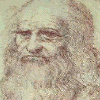
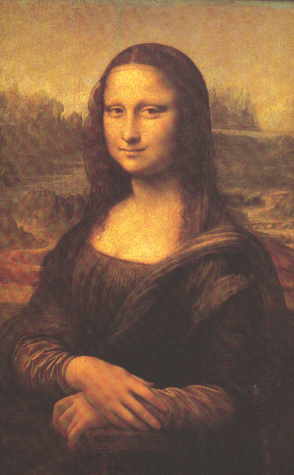 Oh
my GOD! Mona is dead!(Leonardo de Vinci,
"Mona Lisa", 1503)
Oh
my GOD! Mona is dead!(Leonardo de Vinci,
"Mona Lisa", 1503) 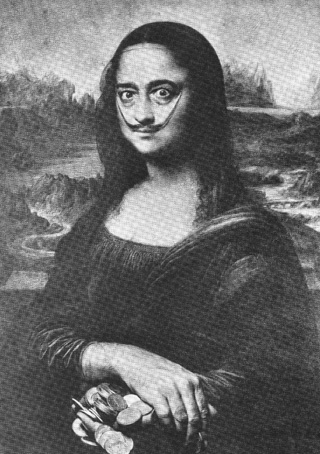 (Salvador Dali, "Self Portrait as Mona Lisa", 1954)
(Salvador Dali, "Self Portrait as Mona Lisa", 1954)
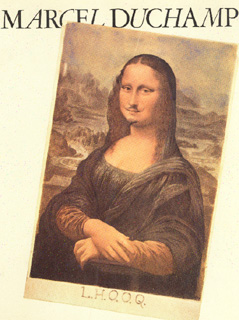 (Marcel Duchamp, "L.H.O.O.Q. (she's got a hot ass), 1919)
(Marcel Duchamp, "L.H.O.O.Q. (she's got a hot ass), 1919)
Most serious writers refuse to make
themselves available to the things that technology is doing. I have never
been able to understand this sort of fear. Many are afraid of using tape
recorders, and the idea of using any electronic means for literary or artistic
purposes seems to them some sort of sacrilege.
To some degree, a small portion
of technology has fallen through the cracks into the hands of the lucky
few. Personal computers and video cameras are the best examples. To accompany
these consumer items and make their use more versatile, hypertextual
and image sampling programs have also been developed"programs designed
to facilitate recombination. It is the plagiarist's dream to be able to
call up, move, and recombine text with simple user-friendly commands. Perhaps
plagiarism
rightfully belongs to post-book culture, since only in that society can
it be made explicit what book culture, with its geniuses and auteurs, tends
to hide"that information is most useful when it interacts
with other information, rather than when it is deified
and presented in
a vacuum.
Thinking about a new means for recombining
information has always been on 20th-century minds, although this search
has been left to a few
until recently. In 1945 Vannevar
Bush,(this link also has LOTS more information
on hypertext) (lmc) a former science advisor to Franklin D. Roosevelt,
proposed a new way of organizing information in an Atlantic Monthly article.
At that time, computer technology was in its earliest stages of development
and its full potential was not really understood. Bush, however, had the
foresight to imagine a device he called the Memex.
In his view it would be based around storage of information on microfilm,
integrated with some means to allow the user to select and display any
section at will, thus enabling one to move freely among previously unrelated
increments of information.
At the time, Bush's Memex could
not be built, but as computer technology evolved, his idea eventually gained
practicality. Around 1960 Theodor
Nelson made this realization when he began studying
computer programming in college:
"Over a period of months, I came
to realize that, although programmers structured their data hierarchically,
they didn't have to. I began to see the computer as the ideal place for
making interconnections among things accessible to people.
I realized that writing did not
have to be sequential and that not only would tomorrow's books and magazines
be on [cathode ray terminal] screens, they could all tie to one another
in every direction. At once I began working on a program (written in 7090
assembler language)
to carry out these ideas."
Nelson's idea, which he called hypertext,
failed to attract any supporters at first, although by 1968 its usefulnessbecame
obvious to some in the government and in defenseindustries. A prototype
of hypertext was developed by another computer innovator, Douglas Englebart,
who is often credited with many breakthroughs in the use of computers (such
as the development of the Macintosh interface, Windows). Englebart's system,
called Augment, was applied to organizing the government's research network,
ARPAnet, and was also used by McDonnell
Douglas, the defense contractor, to aid technical
work groups in coordinating projects such as aircraft design:
All communications are automatically
added to the Augment information base and linked, when appropriate, to
other documents. An engineer could, for example, use Augment to write and
deliver electronically a work plan to others in the work group. The other
members could then review the document and have their comments linked tothe
original, eventually creating a "group memory" of the decisions made. Augment's
powerful linking features allow users to find even old information quickly,
without getting lost or being overwhelmed by detail.
Computer technology(vk)continued
to be refined, and eventually"as with so many other technological breakthroughs
in) this country"once it had been thoroughly exploited by military and
intelligence agencies, the technology was released for commercial exploitation.
Of course, the development and History
of Microcomputers (vk) and consumer-grade technology
for personal computers led immediately to the need for software which would
help one cope with the exponential increase in information, especially
textual information. Probably the first humanistic application of hypertext
was in the field of education. Currently, hypertext and hypermedia
(which adds graphic images to the network of features which can be interconnected)
continue to be fixtures in instructional design and educational technology.
An interesting experiment in this
regard was instigated in 1975 by Robert
Scholes(JA) and
Andries Van Dam(JA) at Brown
University. Scholes, a professor
of English, was contacted by Van Dam, a professor of computer science,
who wanted to know if there were any courses in the humanities that might
benefit from using what at the time was called a text-editing system (now
known as a word processor) with hypertext capabilities built in. Scholes
and two teaching assistants, who formed a research group, were particularly
impressed by one aspect of hypertext. Using this program would make it
possible to peruse in a nonlinear fashion all the interrelated materials
in a text. A hypertext
is thus best seen as a web of interconnected materials.
This description suggested that there is a definite parallel between
the conception of culture-text and that of hypertext:
One of the most important facets
of literature (and one which also leads to difficulties in interpretation)
is its reflexive nature. Individual poems constantly develope their meanings"often
through such means as direct allusion or the reworking of traditional motifs
and conventions, at other times through subtler means, such as genre development
and expansion or biographical referernce"by referring to that total body
of poetic material of which the particular poems comprise a small segment.
Although itwas not difficult to
accumulate a hyperrextually linked data base consisting of poetic materials,
Scholes and his group were more concerned with making it interactive"that
is, they wanted to construct a "communal text" including not only the poetry,
but also incorporating the comments and interpretations offered by individual
students. In this way, each student in turn could read a work and attach
"notes" to it ahout his or her observations. The resulting "expanded text"
would be read and augmented at a terminal on which the screen was divided
into four areas. The student could call up the poem in one of the areas
(referred to as windows) and call up related materials in the other three
windows, in any sequence he or she desired. This would powerfully reinforce
the tendency to read in a nonlinear sequence. By this means, each student
would leam how to read a work as it truly exists, not in "a vacuum" but
rather as the central point of a progressively-revealed body of documents
and ideas.
Hyper(define
as over; in excess;exaggerated)
to exist is analogous to other forms of literary discourse besides poetry.
From the very beginning of its manifestation as a computer program, hypertext
was popularly described as a multidimensional text roughly analogous to
the standard scholarly article in the humanities or social sciences, because
it uses the same conceptual devices, such as footnotes, annotations, allusions
to other works, quotations from other works, etc. Unfortunately, the convention
of linear reading and writing, as well as the physical fact of two-dimensional
pages and the necessity of binding them in only one possible sequence,
have always limited the true potential of this type of text. One problem
is that the reader is often forced to search through the text (or forced
to leave the book and search elsewhere) for related information. This is
a timeconsuming and distracting process; instead of being able to move
easily and instantly among physically remote or inaccessible areas of information
storage, the reader must cope with cumbrous physical impediments to his
or her research or creative work. With the advent of hypertext, it has
become possible to move among related areas of information with a speed
and flexibility that at least approach finally accommodating the workings
of human intellect, to a degree that books and sequential reading cannot
possibly allow.
The recombinant text in hypertextual
form signifies the emergence of the perception of textual constellations
that have always/already gone nova. It is in this uncanny luminosity that
the authorial biomorph has been consumed.2
Barthes and Foucault may be lauded
for theorizing the death of the author; the absent author is more a matter
of everyday life,however, for the technocrat recombining and augmenting
information at the computer or at a video editing console. S/he is living
the dream of capitalism that is still being refined in the area of manufacture.
The Japanese notion of "just in time delivery," in which the units of assembly
are delivered to the assembly line just as they are called for, was a first
step in streamlining the tasks of assembly. In such a system, there is
no sedentary capital, but a constant flow of raw commodities. The assembled
commodity is delivered to the distributor precisely at the moment of consumer
need. This nomadic system eliminates stockpiles of goods. (There still
is some dead time; however, the Japanese have cut it to a matter of hours,
and are working on reducing it to a matter of minutes). In this way, production,
distribution, and consumption are imploded into a single act, with no beginning
or end, just unbroken circulation. In the same manner, the online text
flows in an unbroken stream through the electronic network. There can be
no place for gaps that mark discrete units in the society of speed. Consequently,
~notins of the origin have no place in electronic reality. The production
of the text presupposes its immediate distribution, consumption, and revision.
All who participate in the network also participate in the interpretation
and mutation of the textual stream. The concept of the author did not so
much die as it simply ceased to function. The author has become an abstract
aggregate that cannot be reduced to biology or to the psychology of personality.
Indeed, such a development has apocalyptic connotations"the fear that humanity
will be lost in the textual stream. Perhaps humans are not capable of participating
in hypervelocity.
One must answer that never has there been a time when humans were able,
one and all, to participate in cultural production. Now, at least the potential
for cultural democracy is greater. Thesingle big-genius need not act as
a stand-in for all humanity. The real concern is just the same as it has
always been: the need for access to cultural resources.
The discoveries of postmodem art
and criticism regarding the analogical structures of images demonstrate
that when two obj ects are brought together, no matter how far apart their
contexts may be, a relationship is formed. (Sergei Eisenstien called this
montage when applied to film editing. This is also present in many ideographic
languages,
where in two separate ideograms with their own meanings can form entirely
new words or meanings when brought together.) Montage is also used in terminology
relating to
propaganda
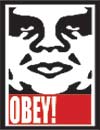






film work. Basically reenforcing
the idea that different meanings can be combined to have a symbolic meaning
for a culture (CULTURE:
"YOUR CULTURE (WHOEVER WE ARE) IS AS IMPORTANT AS OUR CULTURE (WHOEVER
WE ARE)-TIBOR KALMAN)
or people. (lmc) Restricting oneself to a personal relationship of words
is mere convention. The bringing together of two independent expressions
supersedes the original elements and produces a synthetic organization
of greater possibility.
The book has by no means disappeared.
The publishing industry continues to resist the emergence of the recombinant
text, and opposes increases in cultural speed. It has set itself in the
gap between production and consumption of texts, which for purposes of
survival it is bound to maintain. If speed is allowed to increase, the
book is doomed to perish, along with its renaissance companions painting
and sculpture. This is why the industry is so afraid of the recombinant
text. Such a work closes the gap between production and consumption, and
opens the industry to those other than the literary celebrity. If the industry
is unable to differentiate its product through the spectacle of originality
and uniqueness, its profitability collapses. Consequently, the industry
plods along, taking years to publish information needed immediately. Yet
there is a peculiar irony to this situation. In order to reduce speed,
it must also participate in velocity in its most intense form, that of
spectacle. It must claim to defend "quality and standards," and it must
invent celebrities. Such endeavors require the immediacy of advertising"that
is,full participation in the simulacra that will be the industry's own
destruction.
Hence for the bureaucrat, from an
everyday life perspective, the author is alive and well. She can be seen
and touched and traces of h/is existence are on the covers of books and
magazines everywhere in the form of the signature. To such evidence, theory
can only respond with the maxim that the meaning of a given text derives
exclusively from its relation to other texts. Such texts are contingent
upon what came before them, the context in which they are placed, and the
interpretive ability of the reader. This argument is of course unconvincing
to the social segments caught in cultural lag. So long as this is the case,
no recognized historical legitimation will support the producers of recombinant
texts, who will always be suspect to the keepers of "high" culture.
Take your own
words or the words said to be "the very own words" of anyone else living
or dead.
You will soon see that words do not belong to anyone. Words have a vitality
of their own. Poets are supposed to liberate the words"not to chain them
in phrases. Poets have no words "of their very own." Writers do not own
their words. Since when do words belong to anybody? "Your very own words"
indeed! and who are "you"?
The invention of the video portapak
in the late 1960s and early 70s led to considerable speculation among radical
media artists that in the near future, everyone would have access to such
equipment, causing a revolution in the television industry. Many hoped
that video would become the ultimate tool for distributable democratic
art. Each home would become its own production center,
and the reliance on network television for electronic information would
be only one of many options. Unfortunately this prophecy never came to
pass. In the democratic sense, video did little more than super
8 film to redistribute the possibility for image
production, and it has had little or no effect on image distribution. Any
video besides home movies has remained in the hands of an elite technocratic
class, although (as with any class) there are marginalized segments which
resist the media industry, and maintain a program of decentralization.
However,
private video artists did begin to gain some real recognition with their
work during the late 60's and
early 70's,
and with the advent of "video imaging tools," (instruments that could give
effects to what the camera was filming or
what was already
on film) these artists finally began to clain a chunk of the modern art
world for themselves. Video imaging
equipment and
the effects that it produced was the "prototype" for modern day special
effects that come standard on many
hand held cameras.
The video
revolution failed for two reasons"a lack
of access and
an absence of desire.
Gaining access to the hardware, particularly post-production equipment,
has remained as difficult as ever, nor are there any regular distribution
points beyond the local public access offered by some cable TV franchises.
It has also been hard to convince those outside of the technocratic class
why they should want to do something with video, even if they had access
to equipment. This is quite understandable when one considers that media
images are provided in such an overwhelming quantity that the thought of
producing more is empty. The contemporary, plagiarist faces precisely the
same discouragement. The potential
for generating recombinant texts at present is just that, potential.
It does at least have a wider base, since the computer technology for making
recombinant texts has escaped the technocratic class and spread to the
bureaucratic class; however, electronic cultural production has by no means
become the democratic form that utopian
plagiarists hope it will be.
The immediate problems are obvious.
The cost of technology for productive plagiarism
is still too high. Even if one chooses to use the
less efficient form of a hand-written plagiarist manuscript, desktop publishing
technology is required to distribute it, since no publishing house will
accept it. Further, the population in the US is generally skilled only
as receivers of information, not as producers. With this exclusive structure
solidified, technology and the desire and ability to use it remain centered
in utilitarian economy, and hence not much time is given to the technology's
aesthetic or resistant possibilities.
In addition to these obvious barriers,
there is a more insidious problem that emerges from the socialschizophreniaof
the US. While its political system is theoretically based on democratic
principles of inclusion, its economic system is based on the principle
of exclusion. Consequently, as a luxury itself, the cultural superstructure
tends towards exclusion as well. This economic principle determined the
invention of copyright,
which originally developed
not in order to protect writers, but to reduce competition among publishers.
In 17th-century England, where copyright first appeared, the goal was to
reserve for publishers themselves, in perpetuity, the exclusive right to
print certain books. The justification, of course, was that when formed
into a literary work,language
has the author's personality imposed upon it, thereby marking it as private
property. Under this mythology, copyright has flourished in late capital,
setting the legal precedent to privatize any cultural item, whether it
is an image, a word,
a sound or a combination
of either one. Thus the plagiarist (even of the technocratic class)
is kept in a deeply marginal position, regardless of the inventive and
efficient uses in/is methodology may have for the current state of technology
and knowledge.
What is the point of saving language
when there is no longer anything to say?
The present requires us to rethink
and re-present the notion of plagiarism.
Its function has for too long been devalued by an ideology with little
place in techno-culture.
Let the romantic notions of originality, genius, and authorship remain,
but as elements for cultural production without special privilege above
other equally useful elements. It is time to openly and boldly use the
methodology of recombination so as to better parallel the technology of
our time.
Notes
1) In its more heroic form the footnote
has a low-speed hypertextual
function"that is, connecting the reader with other sources of information
that can further articulate the producer's words. It points to additional
information too lengthy to include in the text itself. This is not an objectionable
function. The footnote is also a means of surveillance by which one can
"check up" on a writer, to be sure that he/she is not improperly using
an idea or phrase from the work of another. This function makes the footnote
problematic, although it may be appropriate as a means of verifying conclusions
in a quantitative study, for example. The surveillance function of the
footnote imposes fixed interpretations on a linguistic sequence, and implies
ownership of language and ideas by the individual cited. The note becomes
an homage to the genius who supposedly originated the idea. This would
be acceptable if all who deserved credit got their due; however, such crediting
is impossible, since it would begin an infinite regress. Consequently,
that which is most feared occurs: the labor of many is stolen, smuggled
in under the authority of the signature which is cited. In the case of
those cited who are still living, this designation of authorial ownership
allows them to collect rewards for the work of others. It must be realized
that writing itself is theft: it is a changing of the features of the old
culture-text in much the same way one disguises stolen goods. This is not
to say that signatures should never be cited; butrememberthat
the
signature
is
merely a sign,
a shorthand under
which a collection
of interrelatedideas
may
bestored and
rapidly
deployed.
2)
If the signature is a form of cultural shorthand, then it is na necessarily
honrific on occasion to sabotage the structures s' they do not fall into
rigid complacency. Attributing word to an image, i.e., an intellectual
celebrity, is inappropriat~ The image is a tool for playful use, like any
culture-text c part thereof. It is just as necessary to imagine the history
c the spectacular image, and write it as imagined, as it is t' show fidelity
to its current "factual" structure. One shoul' choose the method that best
suits the context of production one that will render the greater possibility
for interpreta tion. The producer of recombinant texts augments th language,
and often preserves the generalized code, as wine' Karen Eliot quoted Shenrie
Levine as saying, "Plagiarism?
just don't like the way it tastes."
3)
It goes without saying that one is not limited to correcting a work or
to integrating diverse fragments of out-of-date works into a new one; one
can also alter the meaning of these fragments in any appropriate way, leaving
the constipated to their slavish preservation of "citations."
(why do we as a society feel that plagiarism
is acceeptable? Will it iever end? Will this evolve to be more than the
sum of its parts? It already has, everybody's wealth of knowledge has contributed
to this document, and has created something quite unique. It is just a
shame that universities do not accept this policy on their campuses.)
epistemology:
study of origin, nature and limits of human knowledge
This document is in the process of being appropriated by
CSUSM's Fall Semester of VSAR 422 : The Art and Technology of the Moving
Image. This is a living document and is being edited constantly by its
users.
Propiedad
Registrada © 2001. Derechos
reservados mundialmente.
Copyright
© 1999. CSUSM. All rights reserved
worldwide.
h preservation of "citations."
epistemology:
study of origin, nature and limits of human knowledge
This document is in the process of being appropriated by
CSUSM's Fall Semester of VSAR 422 : The Art and Technology of the Moving
Image. This is a living document and is being edited constantly by its
users.
Copyright
© 1999. CSUSM. All rights reserved
worldwide.
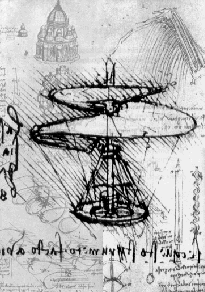


 still suffer tremendously from this problem, when compared to the electronic
arts. Before electronic technology became dominant, cultural perspectives
developed in a manner that more clearly defined texts as individual works.
Cultural fragments appeared in their own right as discrete units, since
their influence moved slowly enough to allow the orderly evolution of an
argument or an aesthetic. Boundaries could be maintained between disciplines
and schools of thought. Knowledge
(of
self) was considered finite,
and was therefore easier to control. In the 19th century this traditional
order began to collapse as new technology began to increase the velocity
of cultural development. The first strong indicators began to appear that
speed was becoming a crucial issue. Knowledge was shifting away from
certitude and transforming itself into information. During
still suffer tremendously from this problem, when compared to the electronic
arts. Before electronic technology became dominant, cultural perspectives
developed in a manner that more clearly defined texts as individual works.
Cultural fragments appeared in their own right as discrete units, since
their influence moved slowly enough to allow the orderly evolution of an
argument or an aesthetic. Boundaries could be maintained between disciplines
and schools of thought. Knowledge
(of
self) was considered finite,
and was therefore easier to control. In the 19th century this traditional
order began to collapse as new technology began to increase the velocity
of cultural development. The first strong indicators began to appear that
speed was becoming a crucial issue. Knowledge was shifting away from
certitude and transforming itself into information. During 
 Oh
my GOD! Mona is dead!(Leonardo de Vinci,
"Mona Lisa", 1503)
Oh
my GOD! Mona is dead!(Leonardo de Vinci,
"Mona Lisa", 1503)  (Salvador Dali, "Self Portrait as Mona Lisa", 1954)
(Salvador Dali, "Self Portrait as Mona Lisa", 1954)

